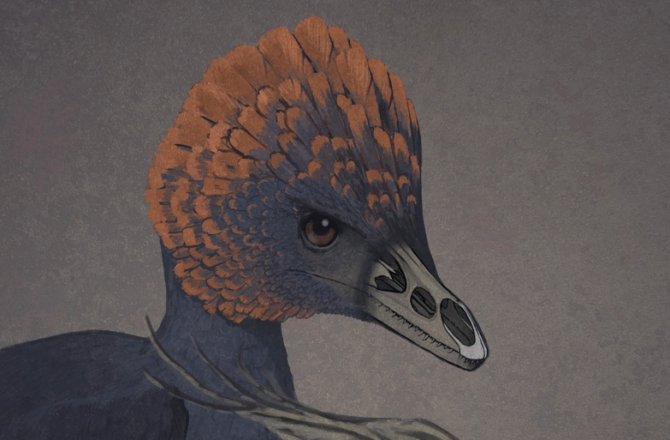Chicks with dino-snouts? With a little molecular tinkering, for the first time scientists have created chicken embryos with broad, Velociraptor-like muzzles in the place of their beaks.
The bizarrely developing chickens shed new light on how the bird beak evolved, scientists added.
The Age of Dinosaurs came to an end with a bang about 65 million years ago, due to an impact from a giant rock from space, which was probably about 6 miles (10 kilometers) across. However, not all of the dinosaurs went extinct because of this catastrophe — birds, or avian dinosaurs, are now found on every continent on Earth..

Above is an artist rendition of the non-avian dinosaur Anchiornis with snouts rendered transparent to show the premaxillary and palatine bones.
“There are between 10,000 and 20,000 species of birds alive today, at least twice as many as the total number of mammal species, and so in many ways it is still the Age of Dinosaurs,” study lead author Bhart-Anjan Bhullar, a paleontologist and developmental biologist at Yale University, told Live Science.
Fossil discoveries have recently yielded great insights into how birds evolved from their reptilian ancestors, such as how feathers and flight emerged. Another key structure that sets birds apart from their dinosaurs ancestors is their beaks. Researchers suspect that beaks evolved to act like tweezers to give birds a kind of precision grip. The beaks help make up for the dinosaurs’ grasping arms, which evolved into wings, giving them the ability to peck at food such as seeds and bugs.
“The beak is a crucial part of the avian feeding apparatus, and is the component of the avian skeleton that has perhaps diversified most extensively and most radically — consider flamingos, parrots, hawks, pelicans and hummingbirds, among others,” Bhullar said in a statement. “Yet little work has been done on what exactly a beak is, anatomically, and how it got that way either evolutionarily or developmentally.”
To learn more about how the beak evolved, a research team led by Bhullar and developmental biologist Arkhat Abzhanov at Harvard University have now successfully reverted the beaks of chicken embryos into snouts more similar to ones seen in Velociraptor and Archaeopteryx than in birds. These embryos did not live to hatch, researchers stressed. “They could have,” Bhullar said. “They actually probably wouldn’t have done that badly if they did hatch. Mostly, though, we were interested in the evolution of the beak, and not in hatching a ‘dino-chicken’ just for the sake of it.”



 May 15th, 2015
May 15th, 2015  Riffin
Riffin  Posted in
Posted in  Tags:
Tags: 